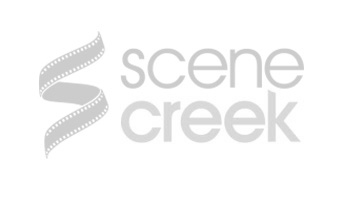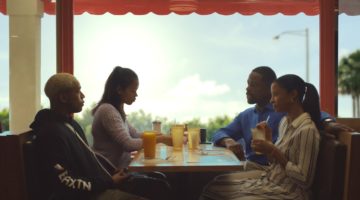Interview: Otto Bell and Aisholpan talk THE EAGLE HUNTRESS
The Eagle Huntress is a really fun and inspiring film and is narrated and produced by Daisy Ridley, adding to its grand, theatrical scope.
We had the pleasure of sitting down with the subject of the film, Aisholpan, along with the director Otto Bell and members of Aisholpan’s family. While the director did much of the talking, this is Aisholpan’s movie. She is The Eagle Huntress.
Scene Creek: What makes your film look so grand?
Otto Bell: We made it with a crew of three people. Never really more than three people, and that said, we definitely felt a sense of responsibility to do justice to the landscape there, to these fantastic characters that we’ve met. We still wanted it to feel cinematic, we still wanted it to feel epic, so we took about 700 kilos of gear up there. I made the film with my life savings. We took a big drone, which could carry a 4K camera, my DP (Simon Niblett) kind of an inventor as well, and Simon he has a crane that is about nine metres, but falls away into a snowboard bag that is 25 kilos and goes up and down in five minutes. So that’s how we got a lot of those big, cinematic, swooping and soaring shots. I think that the message holds true, if you watch it on your phone or on your laptop, but then on the big screen, you get a great sense of Mongolia, of the Altai Mountains, and stuff like that. That’s one of the reasons that we’re lucky to have Mongrel Media, Sony Pictures Classics and people like that releasing the film theatrically.
SC: How were you able to be there on the ground level?
OB: I saw the photographs initially. It was a photo essay, a young Israeli photographer called Asher Svidensky had stumbled upon Aisholpan when he was doing a walkabout at the Altai Mountains. He’d been photographing the next generation of eagle hunters, there’s only about 250 left, approximately, in the world. He’d been photographing 16, 17, 18-year-old boys, and hadn’t been that impressed, actually, a lot of them had been timid and a bit scared of the bird.
(Turns to translator) Did Aisholpan ever tell you this?
(Translator) No.
But then he met Aisholpan, and Aisholpan was like, hugging her father’s bird and not afraid, and incredibly close to it. So I was lucky enough to see these photos the day that they came out on the BBC, and I found Asher on Facebook, and we quickly had a Skype conversation and then I was on the way to meet them in Mongolia. We were just incredibly fortunate, fated I think, because pretty much the day that we arrived, we were talking about the idea of making a film. Agali stood up and we were having tea I remember, and he said “Oh, we’re going to steal an eagle from the side of a mountain this afternoon for Aisholpan. Is that the kind of thing you’d like to film?” (laughing) I was like “Absolutely, yes”. We arrived and were able to film the very first step in her journey to becoming a full eagle hunter, and that was very nice to be right there as it happens and the story really began in earnest. Regardless of what money I had, I always had to be there to help capture the milestones.
SC: Is the Eagle Huntress Aisholpan or the eagle itself?
OB: Well, there is an irony there, because the hunters always pick the female bird, because it is larger and more aggressive. They don’t necessarily see the irony that “why should a young girl do it as well”?
(Turns to Agali) That’s true that you always look for the female in the nest?
(Agali answers) Very rarely in the nest is there one baby eagle, so it’s always females that are chosen unless it’s one. Usually females are bigger so it is best for the hunting.
OB: That’s interesting. I didn’t know that.
SC: What was the contribution from Morgan Spurlock?
OB: Morgan came on the film about two/thirds of the way through after I truly ran out of money. I was actually in debt to the bank at the time. It’s the hardest thing I’ve ever done, certainly. It was quite lonely initially. I cut ten minutes, the steal sequence, and sent that over to Morgan, the biggest email I had, and he called me back right that day and said “Look, I’ve never seen anything like this, what can I do to help you?” and I was like “thank God”. It was a great day. I wasn’t alone any more, you know? He really professionalized things and brought law and order to the whole production. He introduced me to financiers, and we cut the film at his place at Warrior Poets and he helped me find a great editor, producers, and he was “the lively turnkey”.
For the soundtrack he said “who do you want?” and I said “Get me Sia!” as a kind of like a dream, and sure enough, he did! She wrote and recorded that song for us very quickly after seeing the film, I think in a few days, and he called me into his office, I was uptown in New York at the time, and he’s like “just come to the office”, and I was like, “oh no, what have I done wrong”. I felt like I was in trouble, called in by the principal, and he called me in and gave me a big hug, and said “listen to this”, and I am not kidding, we both cried, because it was so perfect, and her story.
SC: What’s next for Aisholpan and for the eagle?
Aisholpan: (through her translator) I will release the eagle in about three years and I may get another one, or I might teach my younger brother or sister to train an eagle.


